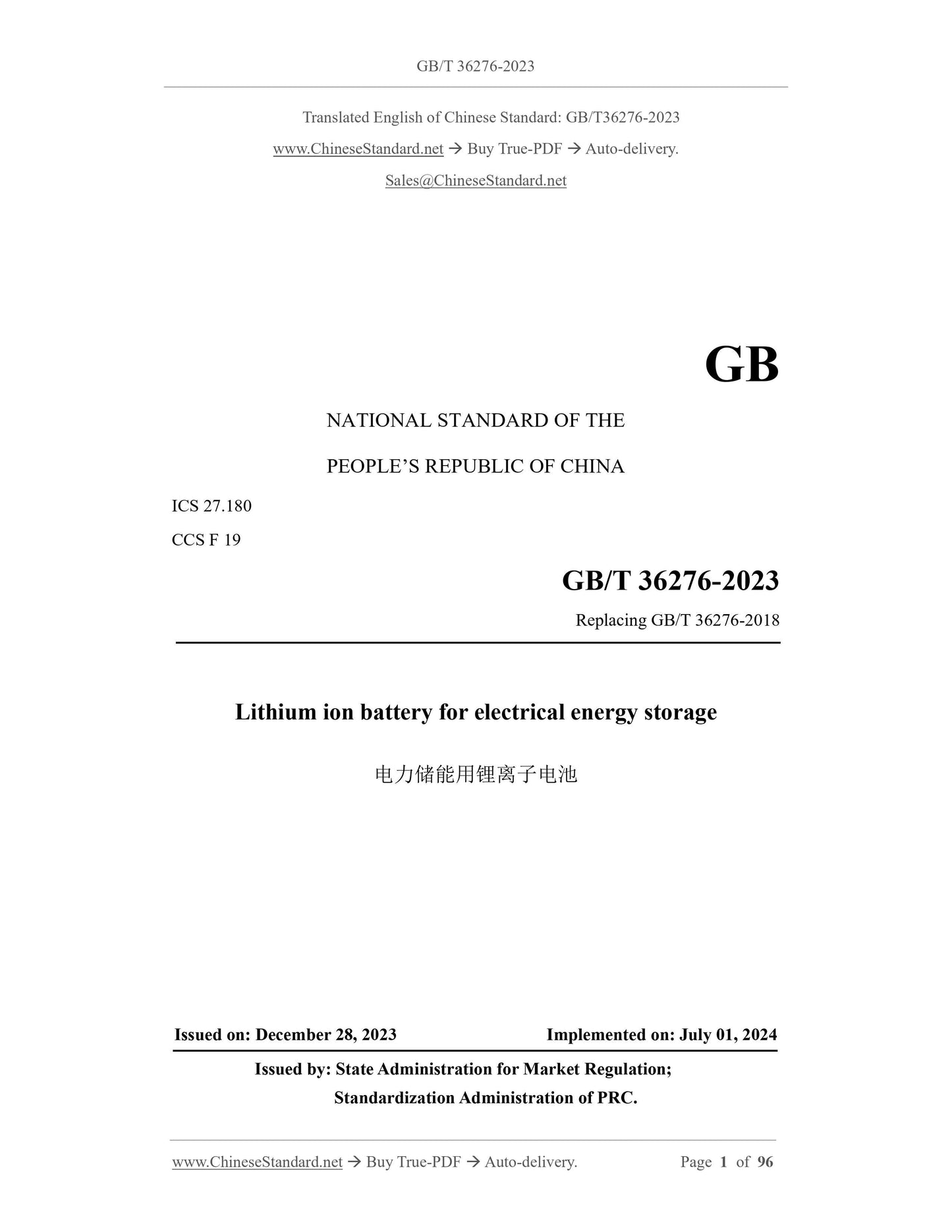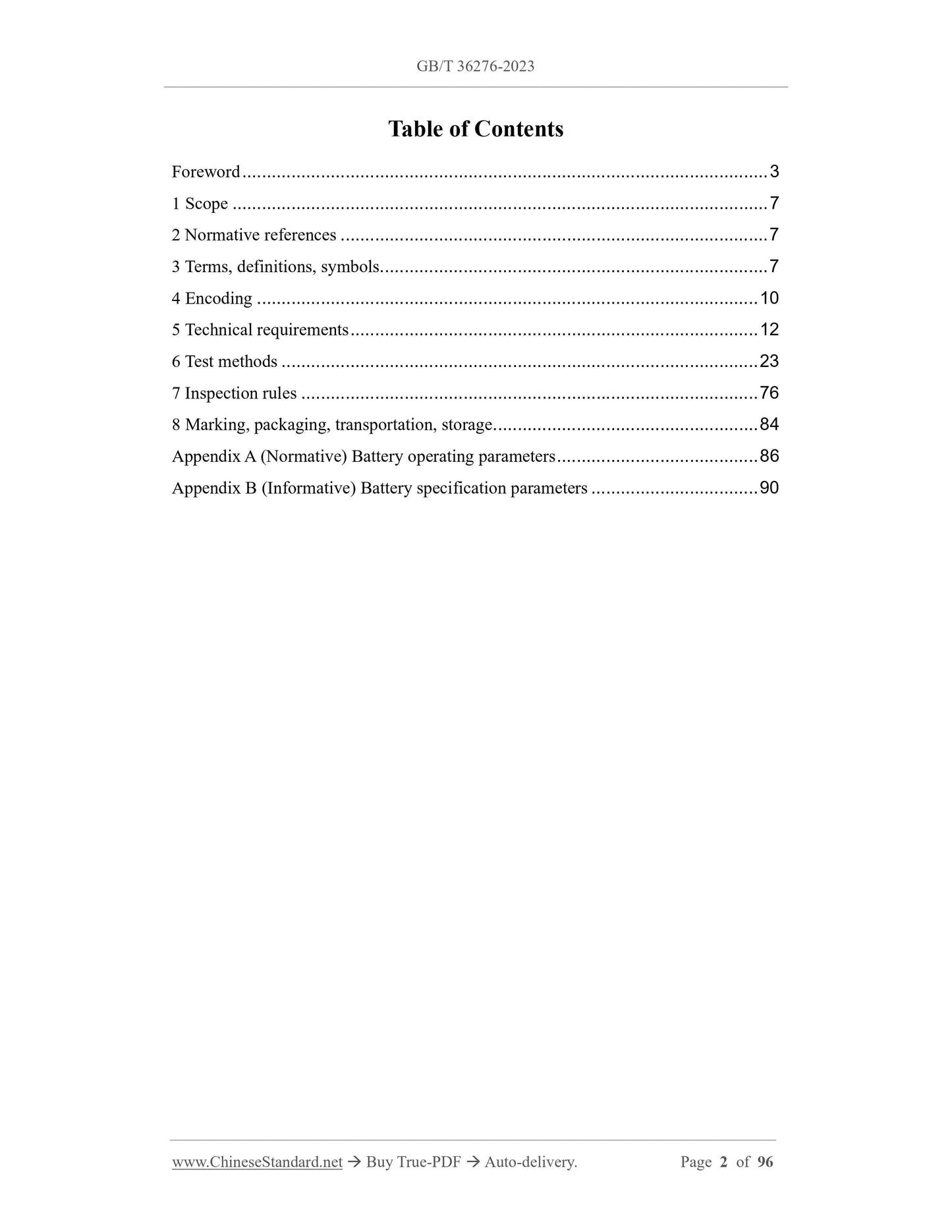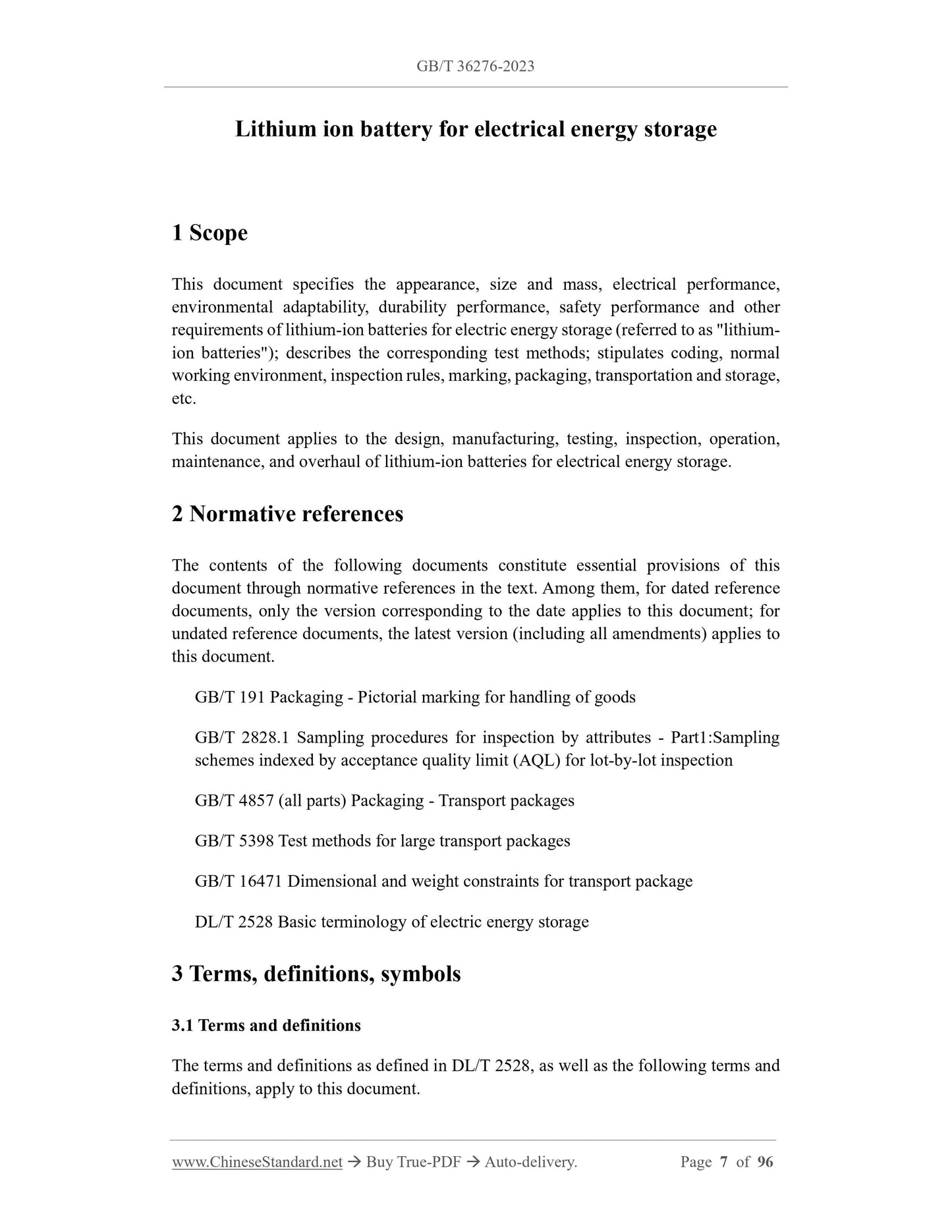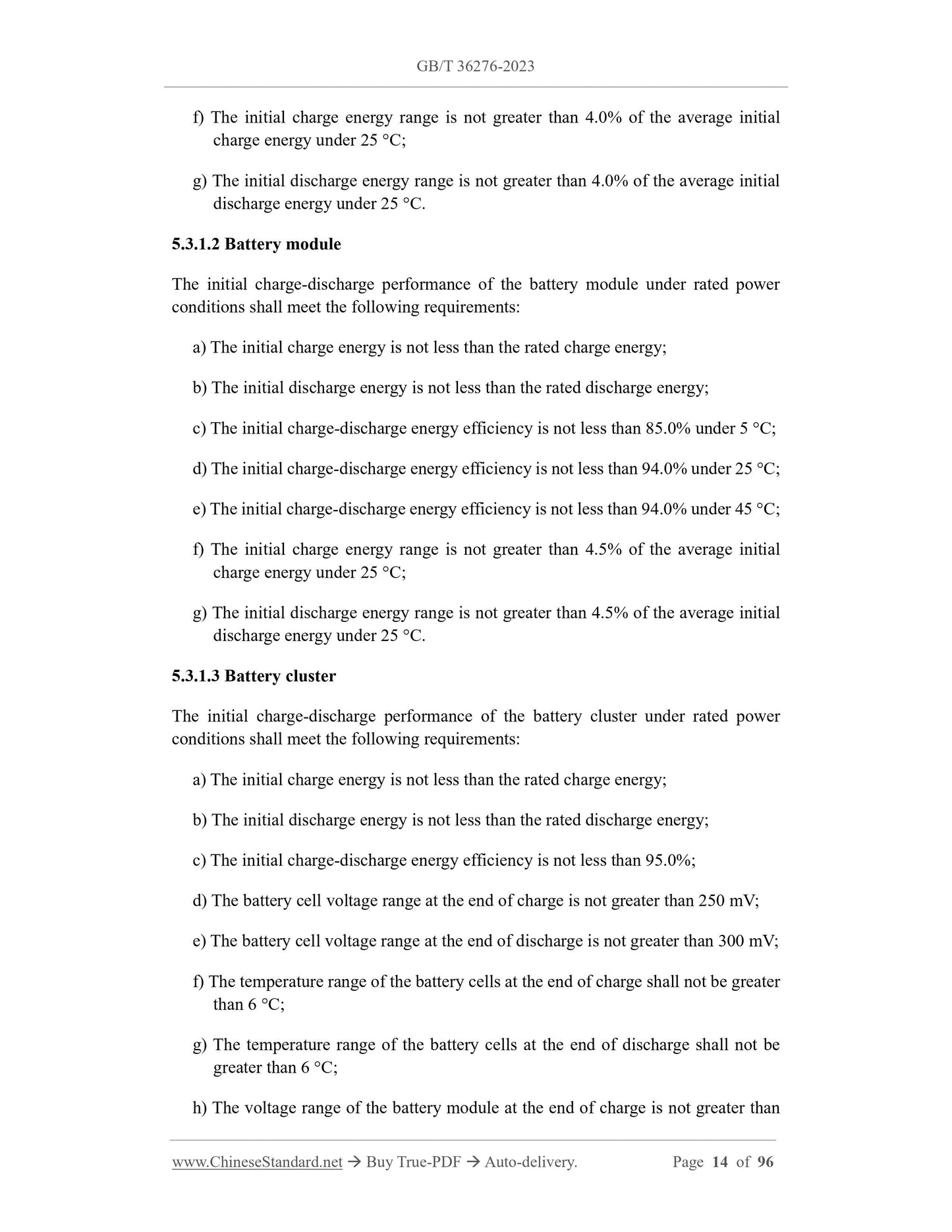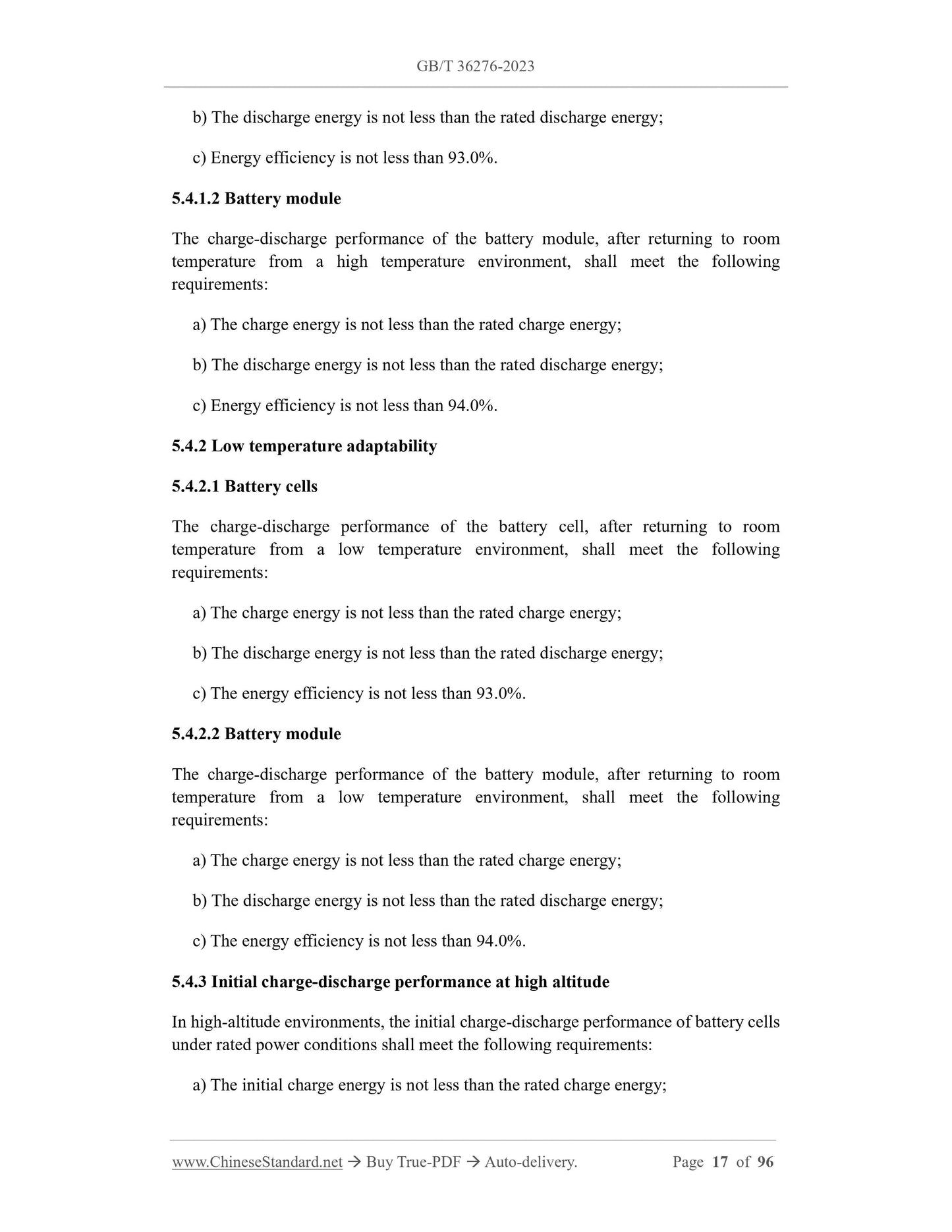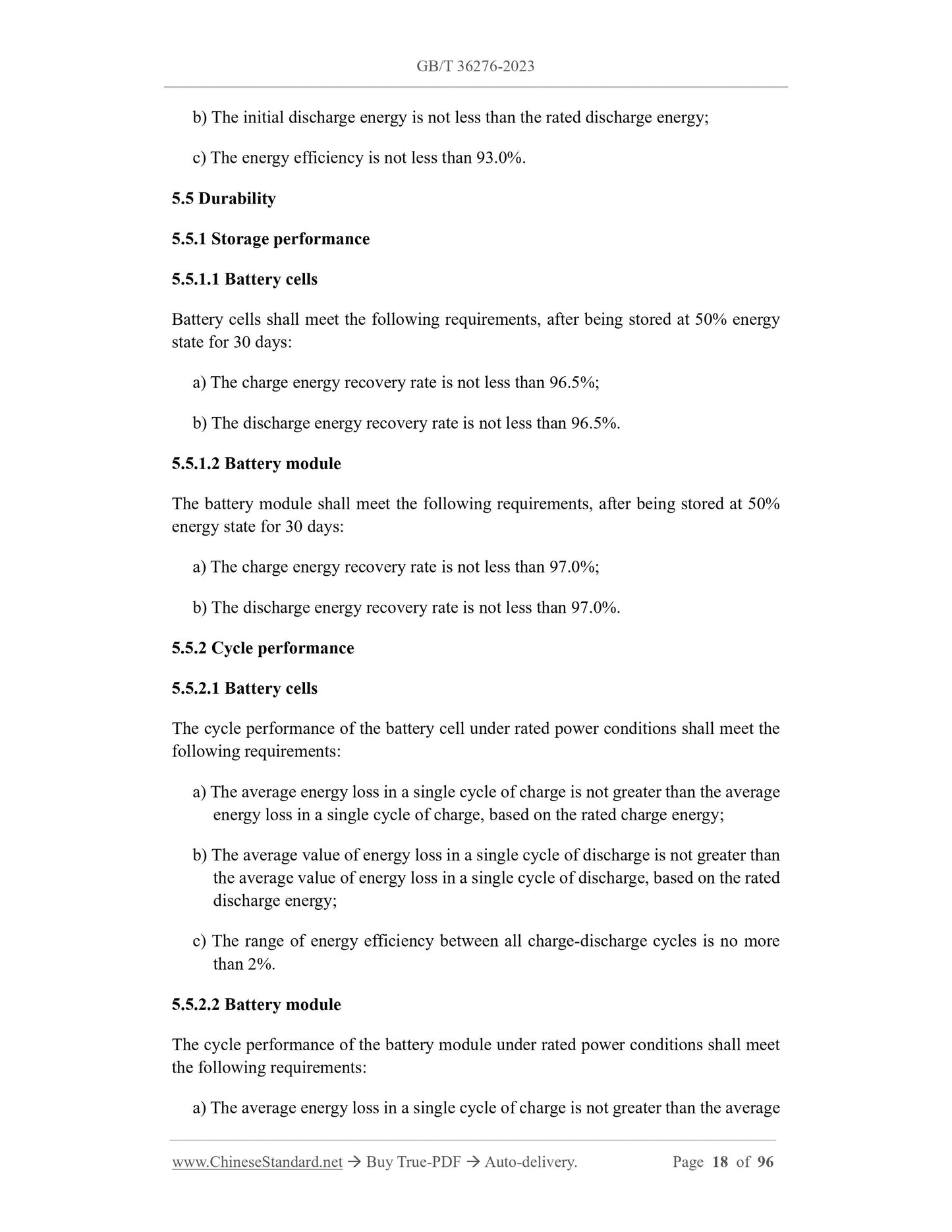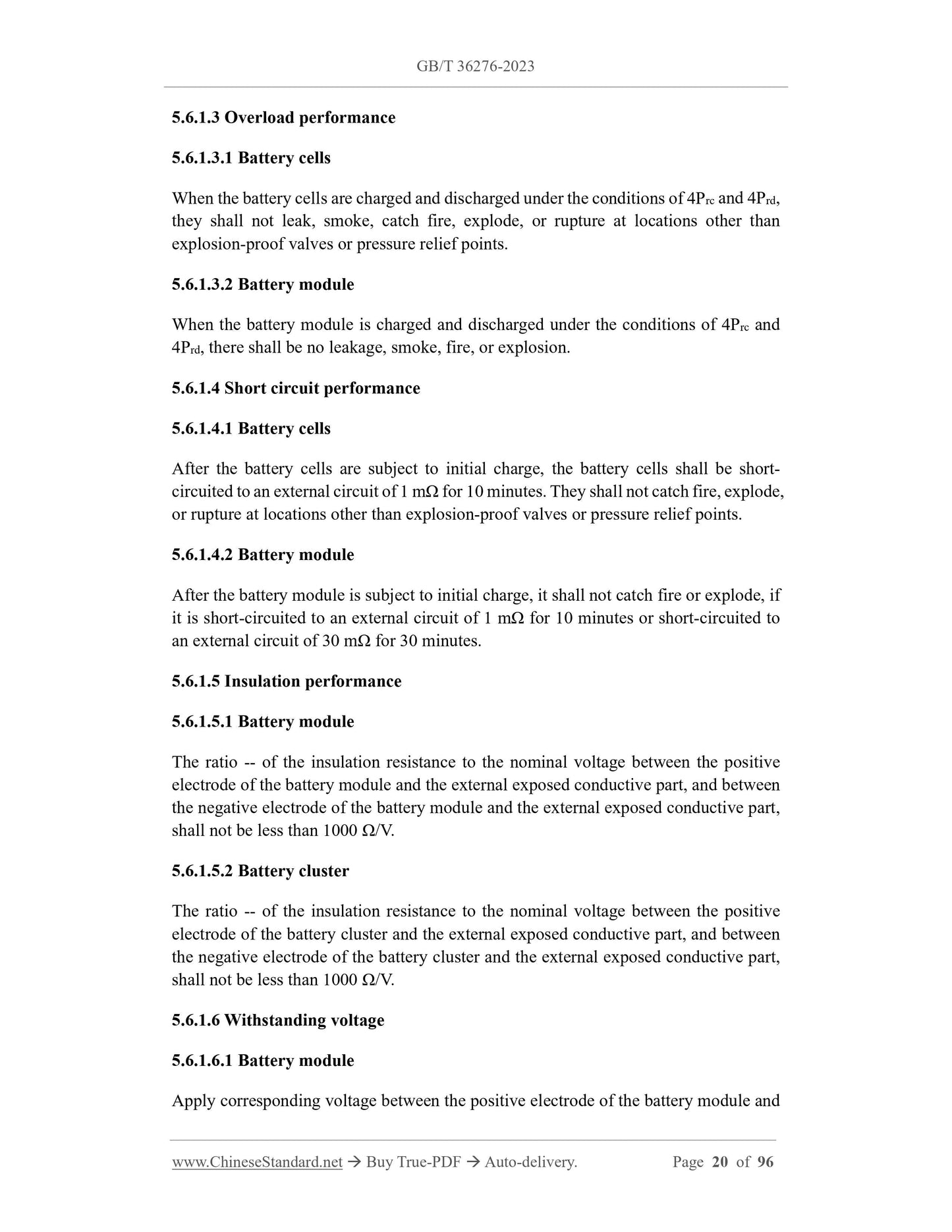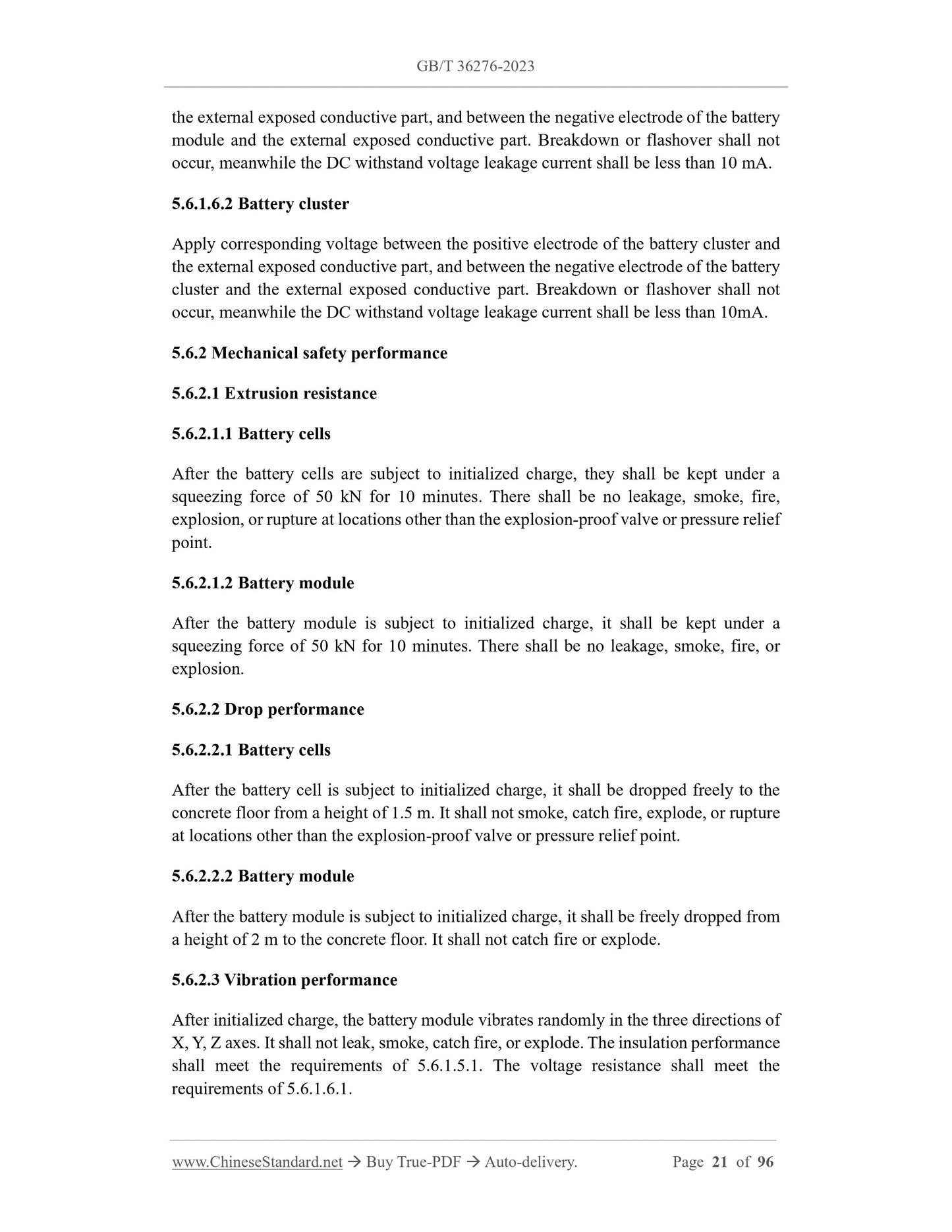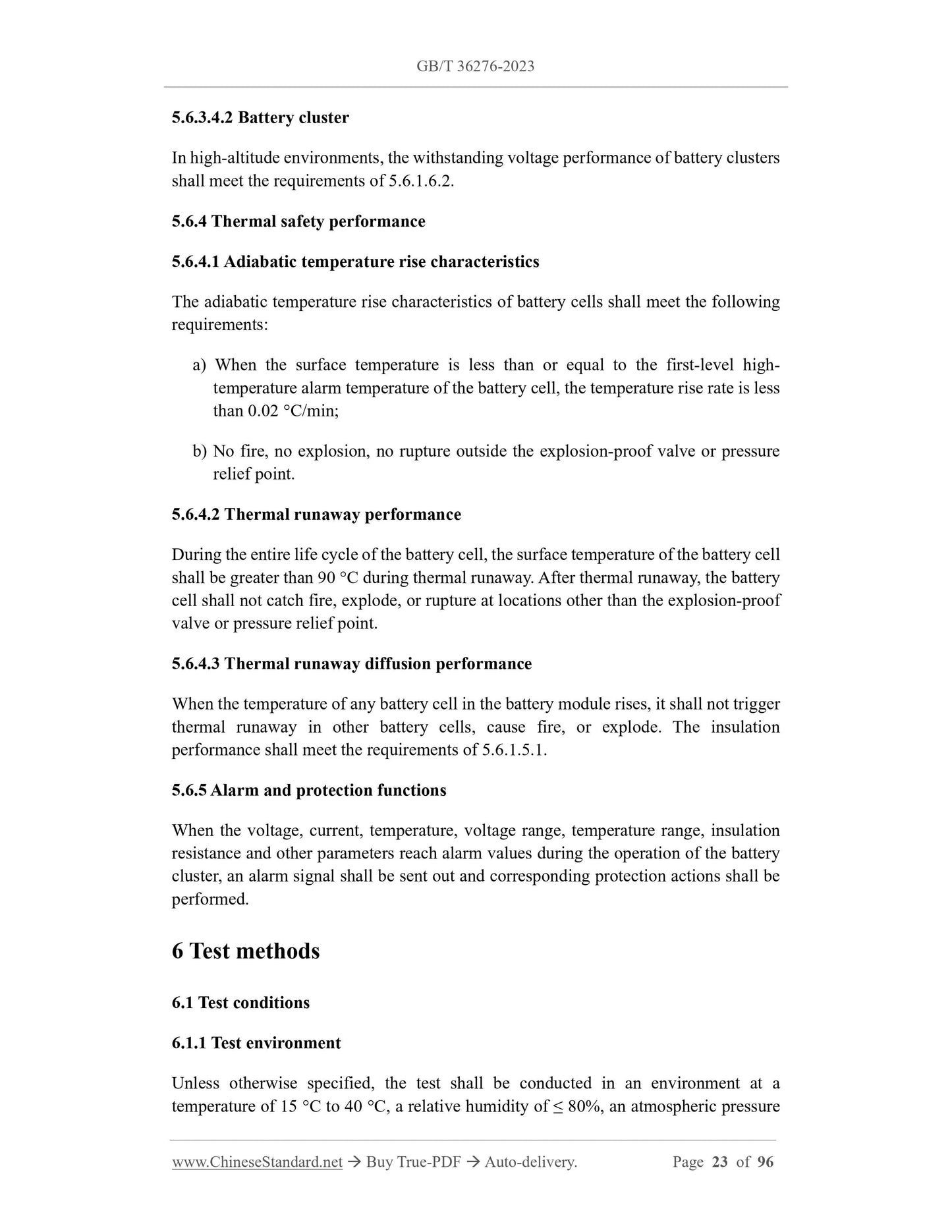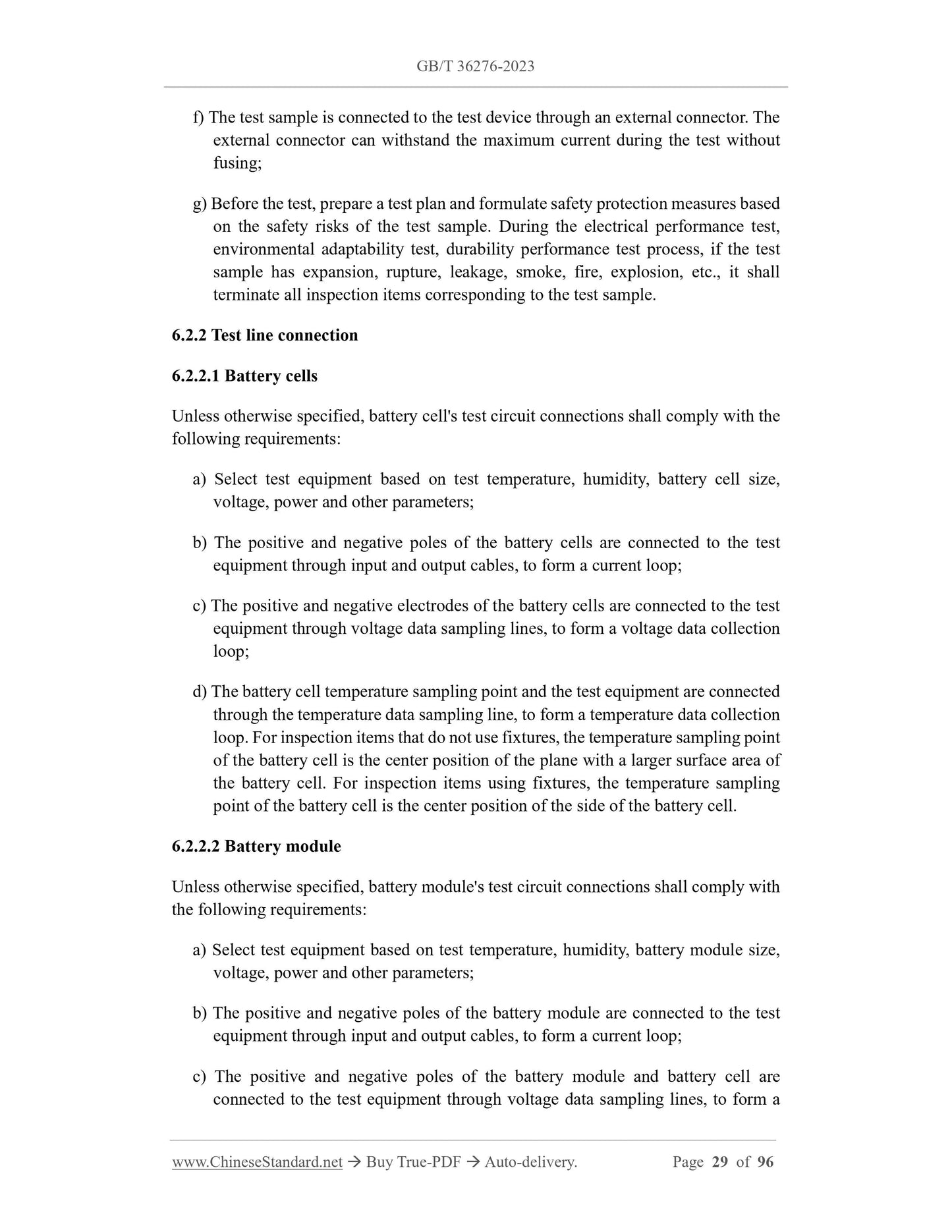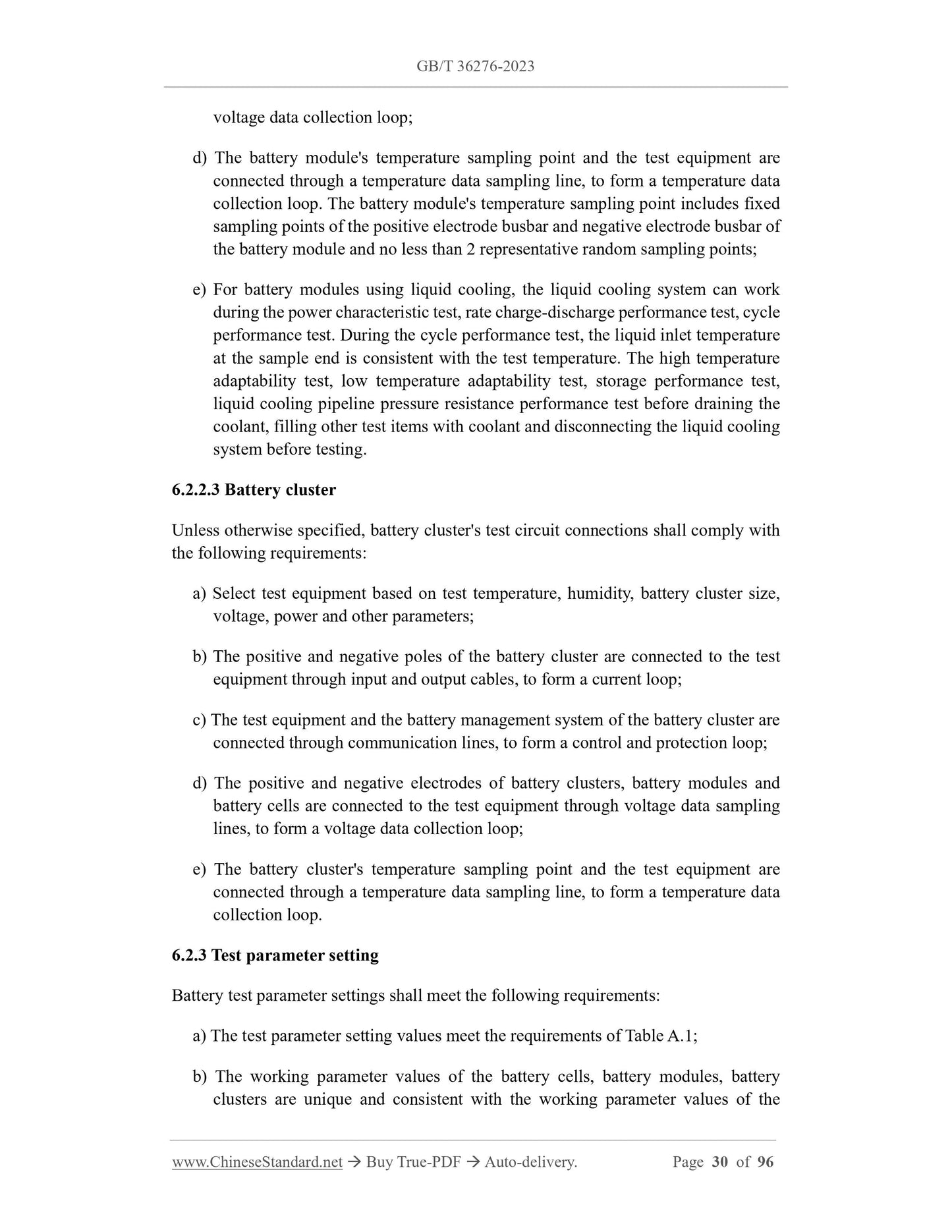1
/
of
12
www.ChineseStandard.us -- Field Test Asia Pte. Ltd.
GB/T 36276-2023 English PDF (GB/T36276-2023)
GB/T 36276-2023 English PDF (GB/T36276-2023)
Regular price
$815.00
Regular price
Sale price
$815.00
Unit price
/
per
Shipping calculated at checkout.
Couldn't load pickup availability
GB/T 36276-2023: Lithium ion battery for electrical energy storage
Delivery: 9 seconds. Download (and Email) true-PDF + Invoice.Get Quotation: Click GB/T 36276-2023 (Self-service in 1-minute)
Newer / historical versions: GB/T 36276-2023
Preview True-PDF
Scope
This document specifies the appearance, size and mass, electrical performance,environmental adaptability, durability performance, safety performance and other
requirements of lithium-ion batteries for electric energy storage (referred to as "lithium-
ion batteries"); describes the corresponding test methods; stipulates coding, normal
working environment, inspection rules, marking, packaging, transportation and storage,
etc.
This document applies to the design, manufacturing, testing, inspection, operation,
maintenance, and overhaul of lithium-ion batteries for electrical energy storage.
Basic Data
| Standard ID | GB/T 36276-2023 (GB/T36276-2023) |
| Description (Translated English) | Lithium ion battery for electrical energy storage |
| Sector / Industry | National Standard (Recommended) |
| Classification of Chinese Standard | F19 |
| Classification of International Standard | 27.180 |
| Word Count Estimation | 62,649 |
| Date of Issue | 2023-12-28 |
| Date of Implementation | 2024-07-01 |
| Older Standard (superseded by this standard) | GB/T 36276-2018 |
| Issuing agency(ies) | State Administration for Market Regulation, China National Standardization Administration |
Share
